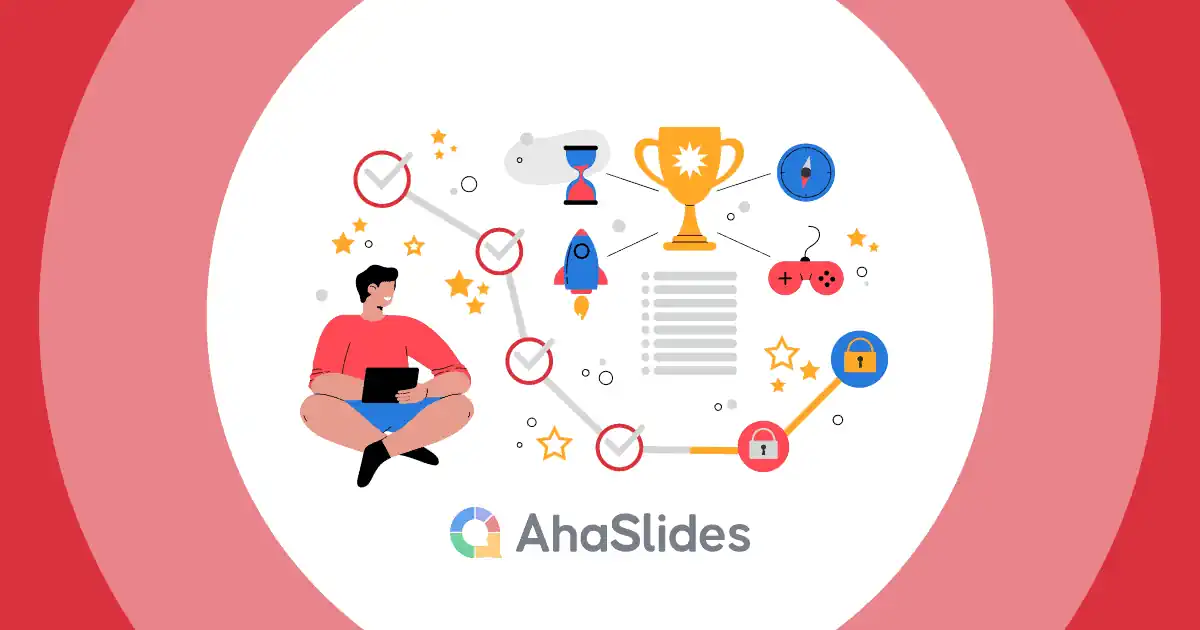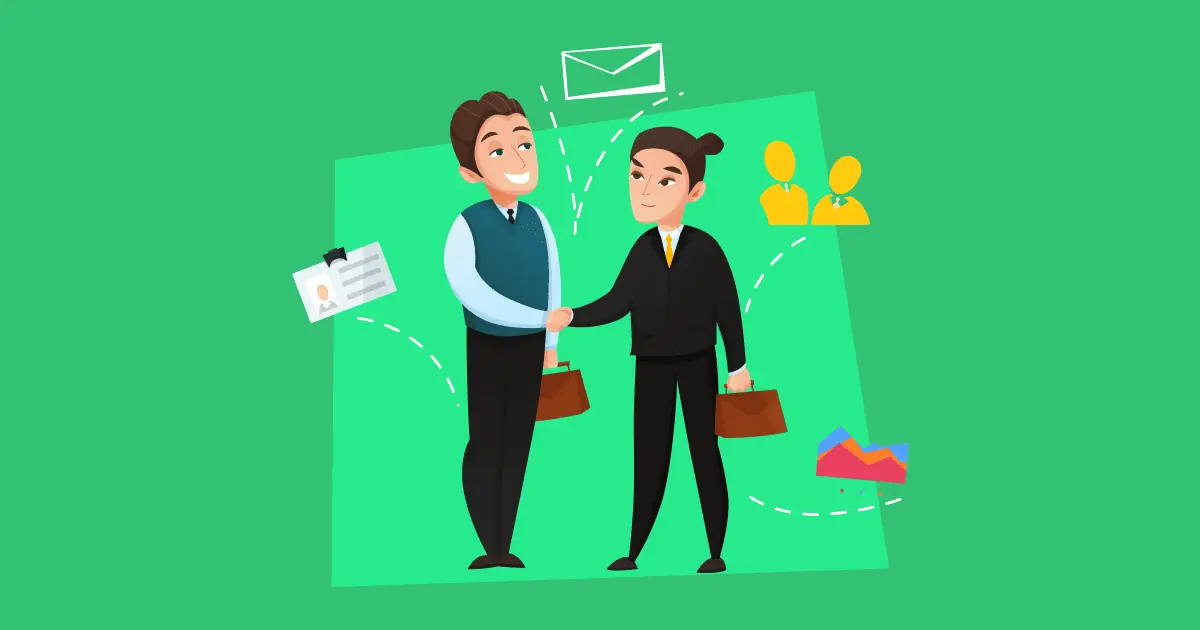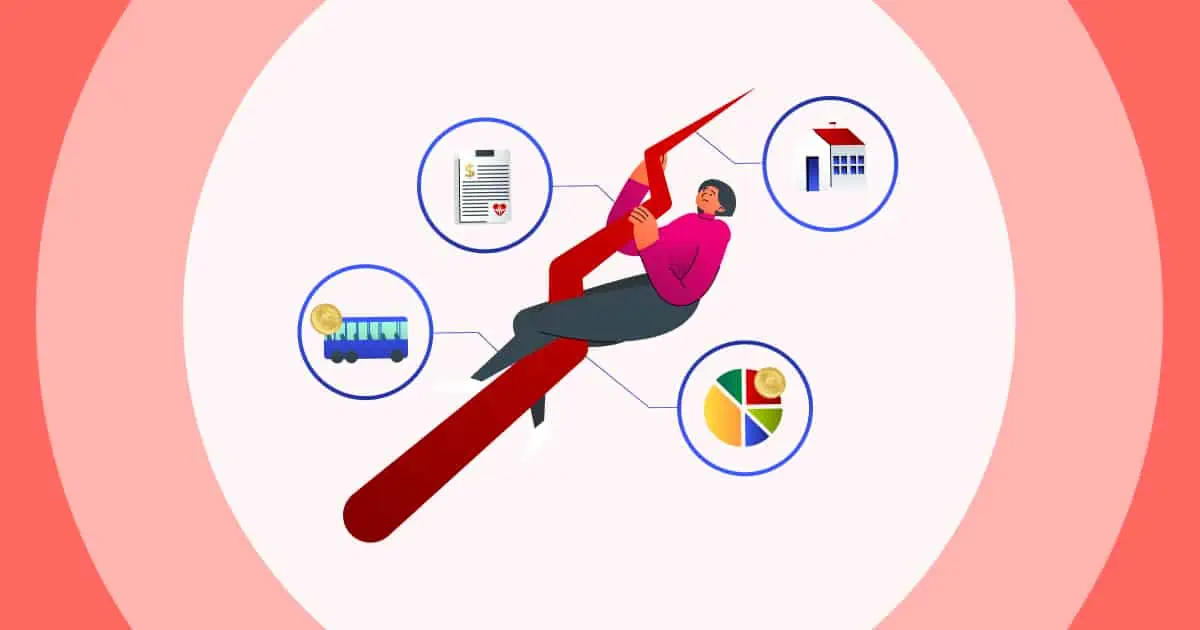Bereiten Sie sich auf ein Vorstellungsgespräch vor, bei dem Sie Ihre kreativen Problemlösungsfähigkeiten unter Beweis stellen müssen? Die Fähigkeit, spontan zu denken und konkrete Beispiele für innovative Problemlösungen zu präsentieren, ist eine wichtige Fähigkeit, die viele Arbeitgeber suchen.
Um ein tieferes Verständnis dieser Fähigkeit zu erlangen und uns auf entsprechende Interviewfragen vorzubereiten, lassen Sie uns eintauchen in Beispiele für kreative Problemlösungen im heutigen Beitrag.
Von Fragen zur methodischen Herangehensweise an Herausforderungen bis hin zu Fragen, bei denen Sie aufgefordert werden, eine von Ihnen vorgeschlagene unkonventionelle Lösung zu beschreiben, decken wir eine Reihe gängiger Interviewthemen mit Schwerpunkt auf Problemlösung ab.
Inhaltsverzeichnis
- Was ist kreative Problemlösung?
- Vorteile kreativer Fähigkeiten zur Problemlösung
- 9 Fragen und Antworten im Vorstellungsgespräch zur kreativen Problemlösung
- #1. Wie gehen Sie ein neues Problem oder eine neue Herausforderung an?
- #2. Welche radikal neuen oder anderen Herangehensweisen an eine Herausforderung?
- #3. Können Sie ein Beispiel für eine Situation nennen, in der Sie eine kreative Lösung für ein Problem gefunden haben?
- #4. Können Sie sich an eine Zeit erinnern, in der Sie eine Krise erfolgreich gemeistert haben?
- #5. Können Sie drei häufige Hindernisse für die Kreativität nennen und wie Sie diese überwinden?
- #6. Mussten Sie schon einmal ein Problem lösen, hatten aber vorher nicht alle nötigen Informationen dazu? Und was haben Sie getan?
- #7. Was tun, wenn es unmöglich erscheint, die richtige Lösung für ein Problem zu finden?
- #8. Woher wissen Sie, wann Sie das Problem selbst lösen oder um Hilfe bitten müssen?
- #9. Wie bleibt man kreativ?
- Tipps zur Verbesserung Ihrer kreativen Fähigkeiten zur Problemlösung
- Fazit
- Häufig gestellte Fragen
Weitere Tipps mit AhaSlides
Sehen Sie sich weitere interaktive Ideen mit an AhaFolien
- Sechs denkende Hüte
- Kreative Denkfähigkeiten
- Beispiele für Coaching am Arbeitsplatz
- Beispiele zur Entscheidungsfindung

Suchen Sie nach einem Engagement-Tool bei der Arbeit?
Versammeln Sie Ihre Freunde zu einem lustigen Quiz auf AhaSlides. Melden Sie sich an, um am kostenlosen Quiz aus der AhaSlides-Vorlagenbibliothek teilzunehmen!
🚀 Holen Sie sich ein kostenloses Quiz ☁️
Was ist kreative Problemlösung?
Wie der Name andeutet, Creative Problem Solving ist ein Prozess zur Schaffung einzigartiger und innovativer Lösungen für Probleme oder Herausforderungen. Es erfordert, unkonventionelle Ideen zu entwickeln, anstatt die traditionellen Vorgehensweisen zu verfolgen. Es erfordert eine Kombination aus Andersdenken, Herausfinden, was das Beste ist, Dinge aus verschiedenen Blickwinkeln betrachten und neue Chancen nutzen bzw. Ideen entwickeln.
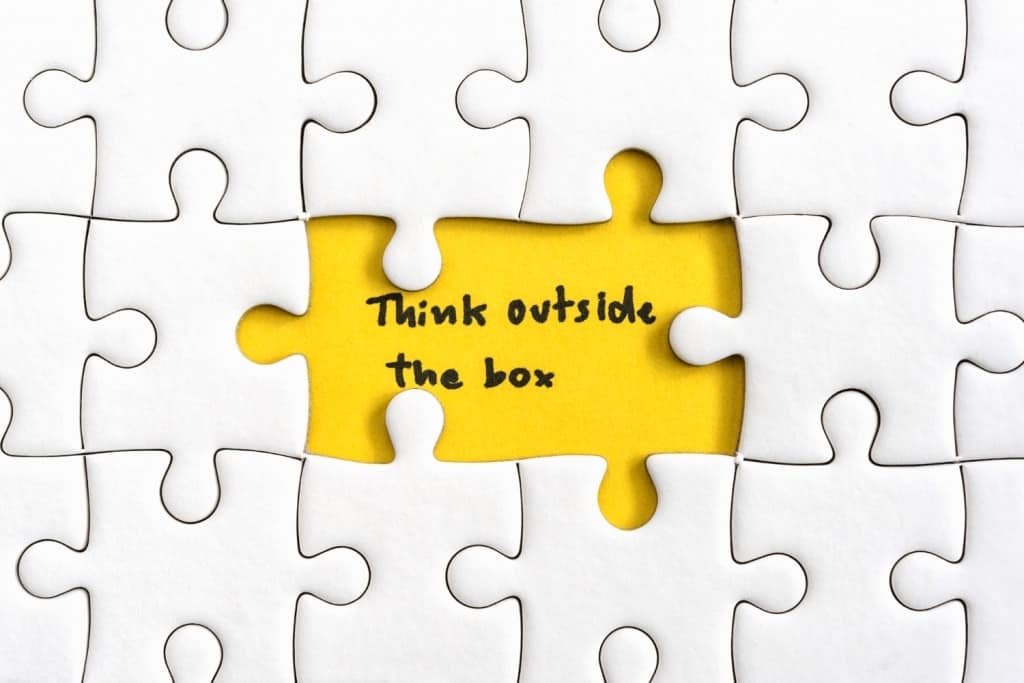
Und denken Sie daran, dass das Ziel der kreativen Problemlösung darin besteht, praktische, effektive und einzigartige Lösungen zu finden, die über konventionelle (und manchmal natürlich riskante) Lösungen hinausgehen.
Benötigen Sie weitere Beispiele für kreative Problemlösungen? Weiterlesen!
Vorteile kreativer Fähigkeiten zur Problemlösung
Als Kandidat können kreative Fähigkeiten zur Problemlösung mehrere Vorteile mit sich bringen, darunter:
- Beschäftigungsfähigkeit erhöhen: Arbeitgeber suchen nach Menschen, die nicht in der Routine feststecken, sondern kritisch denken, Probleme lösen und kreative Lösungen entwickeln können – Dinge, die effizienter arbeiten und mehr Zeit und Mühe sparen. Wenn Sie Ihre Fähigkeiten unter Beweis stellen, werden Sie zu einem attraktiveren Kandidaten und erhöhen Ihre Einstellungschancen.
- Entscheidungsfindung verbessern: Sie helfen Ihnen, Probleme aus verschiedenen Blickwinkeln anzugehen und bessere Entscheidungen zu treffen.
- Anpassungsfähigkeit erhöhen: Die Fähigkeit, kreative Lösungen zu finden, kann Ihnen helfen, sich an Veränderungen anzupassen und neue Herausforderungen effektiv anzugehen.
- Leistung verbessern: Das Lösen von Problemen auf innovative Weise kann zu einer höheren Produktivität, Leistung und Effizienz führen.
Im explosionsartigen Wachstum der generativen KI-Welt gilt sie als eine der wichtigsten Soft Skills für Mitarbeiter. Im nächsten Teil finden Sie Fragen und Antworten zum Thema Problemlösung im Vorstellungsgespräch.
9 Fragen und Antworten im Vorstellungsgespräch zur kreativen Problemlösung
Hier sind einige Beispiele für kreative Problemlösungen von Interviewfragen, zusammen mit Beispielantworten:
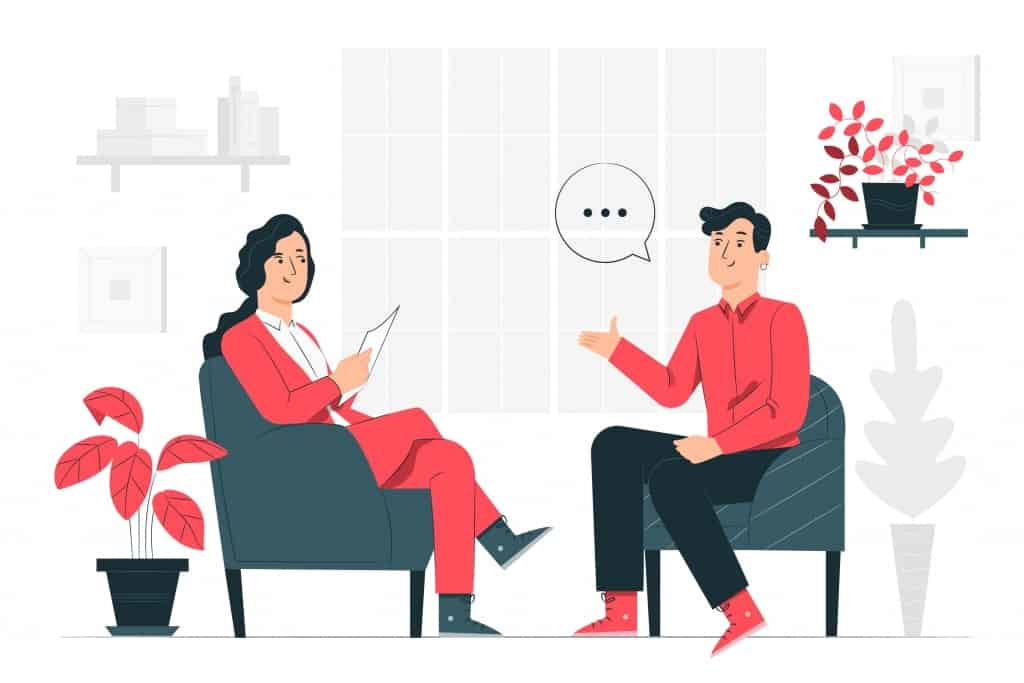
#1. Wie gehen Sie ein neues Problem oder eine neue Herausforderung an?
Dies ist der Zeitpunkt, an dem Sie dem Interviewer Ihre Arbeitsweise und Ihre Denkweise zeigen sollten.
Beispielantwort: Ich beginne damit, Informationen zu sammeln und das Problem gründlich zu verstehen. Anschließend überlege ich mir mögliche Lösungen und überlege, welche das größte Potenzial haben. Dabei berücksichtige ich auch die potenziellen Risiken und Vorteile jeder Lösung. Anschließend wähle ich die beste Lösung aus und erstelle einen Aktionsplan für deren Umsetzung. Ich bewerte die Situation kontinuierlich und nehme bei Bedarf Anpassungen vor, bis das Problem gelöst ist.
#2. Welche radikal neuen oder anderen Herangehensweisen an eine Herausforderung?
Diese Frage ist eine schwierigere Version der vorherigen. Sie erfordert innovative und einzigartige Lösungen für eine Herausforderung. Der Interviewer möchte sehen, ob Sie verschiedene Lösungsansätze haben. Es ist wichtig, nicht unbedingt die beste Antwort zu geben, sondern Ihre Fähigkeit zu zeigen, kreativ zu denken und neue Ideen zu entwickeln.
Beispielantwort: Eine völlig andere Möglichkeit, diese Herausforderung anzugehen, könnte die Zusammenarbeit mit einem Unternehmen oder einer Organisation außerhalb unserer Branche sein. Dies könnte neue Perspektiven und Ideen liefern. Ein weiterer Ansatz könnte darin bestehen, Mitarbeiter aus verschiedenen Abteilungen in den Problemlösungsprozess einzubeziehen. Dies kann zu funktionsübergreifenden Lösungen führen und ein breites Spektrum an Ideen, Perspektiven und unterschiedlichen Standpunkten einbringen.
#3. Können Sie ein Beispiel für eine Situation nennen, in der Sie eine kreative Lösung für ein Problem gefunden haben?
Der Interviewer braucht konkretere Beweise oder Beispiele für Ihre kreativen Fähigkeiten zur Problemlösung. Beantworten Sie die Frage also so spezifisch wie möglich und zeigen Sie ihnen, falls verfügbar, spezifische Metriken.
Beispielantwort: Ich führe eine Marketingkampagne durch, und es fällt uns schwer, eine bestimmte Zielgruppe zu erreichen. Ich habe das Ganze aus einer anderen Perspektive betrachtet und mir eine Idee ausgedacht. Die Idee war, eine Reihe interaktiver Events zu schaffen, damit die Kunden unsere Produkte auf einzigartige und unterhaltsame Weise erleben können. Die Kampagne war ein voller Erfolg und hat ihre Ziele in Bezug auf Engagement und Umsatz übertroffen.
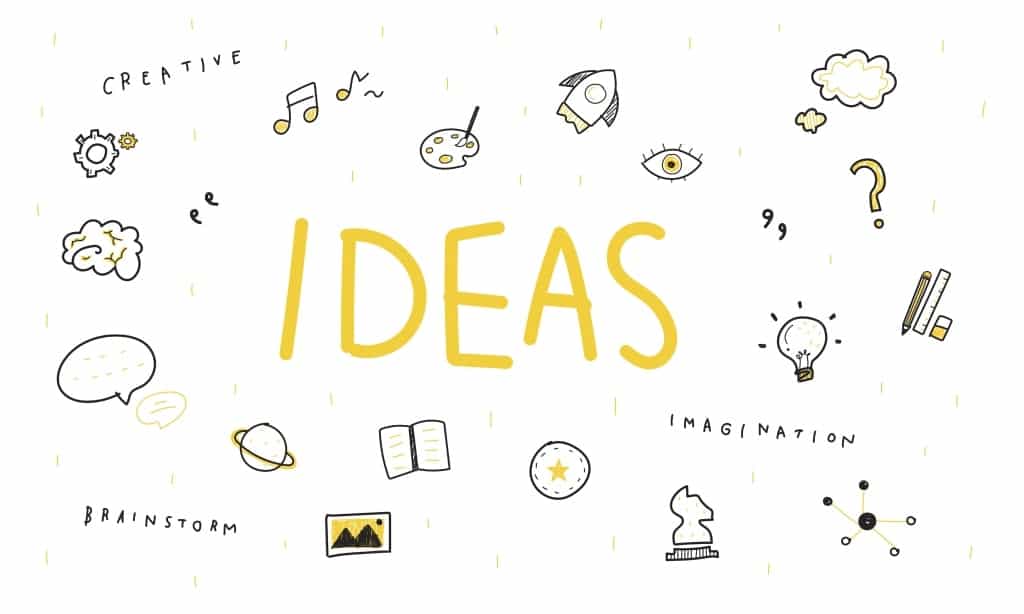
#4. Können Sie sich an eine Zeit erinnern, in der Sie eine Krise erfolgreich gemeistert haben?
Interviewer möchten sehen, wie Sie mit Hochdrucksituationen umgehen und Probleme effektiv lösen.
Beispielantwort: Als ich an einem Projekt arbeitete, war eines der wichtigsten Teammitglieder aufgrund eines Notfalls plötzlich nicht verfügbar. Dadurch drohte eine Verzögerung des Projekts. Ich analysierte die Situation schnell und plante, Aufgaben an andere Teammitglieder zu verteilen. Außerdem kommunizierte ich effektiv mit dem Kunden, um sicherzustellen, dass er über die Situation informiert war und wir weiterhin im Zeitplan lagen, um unseren Termin einzuhalten. Dank effektivem Krisenmanagement konnten wir die Projektaufgaben pünktlich und ohne größere Probleme abschließen.
#5. Können Sie drei häufige Hindernisse für die Kreativität nennen und wie Sie diese überwinden?
So schätzt der Interviewer Ihre Perspektive ein und hebt Sie von anderen Kandidaten ab.
Beispielantwort: Ja, ich kann drei häufige Hindernisse für Kreativität bei der Problemlösung identifizieren. Erstens kann die Angst vor dem Scheitern Menschen davon abhalten, Risiken einzugehen und neue Ideen auszuprobieren. Ich überwinde dies, indem ich Misserfolge als Lernmöglichkeit betrachte und mich selbst ermutige, mit neuen Ideen zu experimentieren.
Zweitens können begrenzte Ressourcen wie Zeit und Finanzen die Kreativität einschränken. Ich bewältige dies, indem ich Problemlösungen in meinem Zeitplan priorisiere und die besten kostengünstigen Werkzeuge und Methoden finde. Schließlich kann mangelnde Inspiration die Kreativität behindern. Um dem entgegenzuwirken, setze ich mich neuen Erfahrungen und Umgebungen aus, probiere neue Hobbys aus, reise und umgebe mich mit Menschen mit unterschiedlichen Perspektiven. Ich lese auch über neue Ideen und Werkzeuge und führe ein Tagebuch, um meine Gedanken und Ideen festzuhalten.
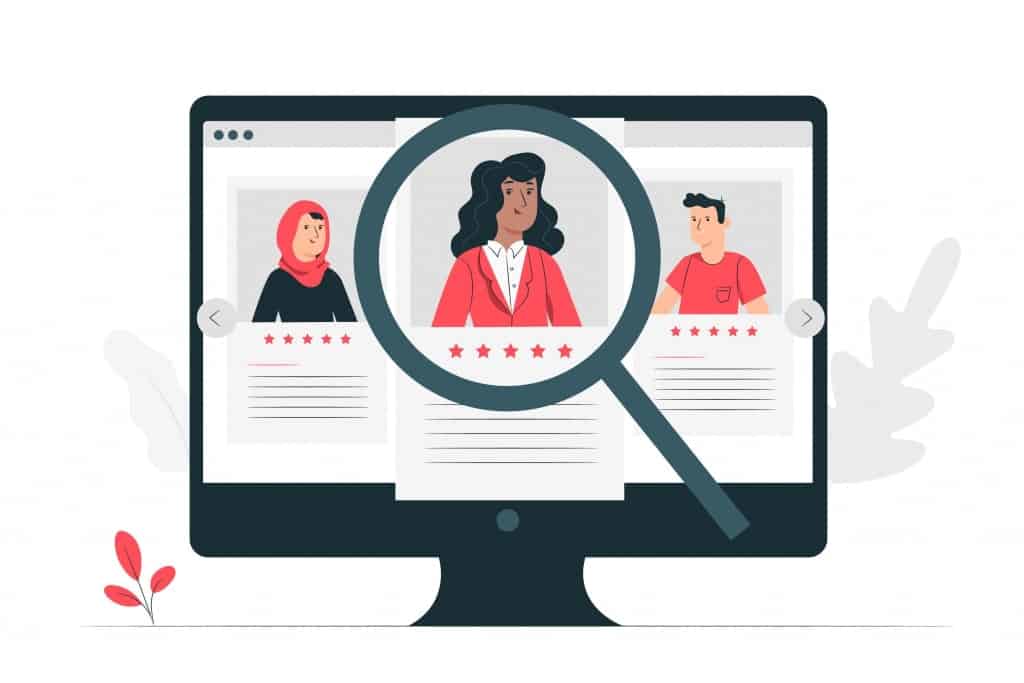
#6. Mussten Sie schon einmal ein Problem lösen, hatten aber vorher nicht alle nötigen Informationen dazu? Und was haben Sie getan?
Plötzlich auftretende Probleme sind in jedem Arbeitsumfeld eine alltägliche Situation. Arbeitgeber möchten wissen, wie Sie mit dieser Unannehmlichkeit angemessen und effektiv umgehen.
Beispielantwort: "In solchen Fällen greife ich proaktiv auf verschiedene Quellen zurück und sammle Informationen, um die Situation besser zu verstehen. Ich spreche mit Stakeholdern, recherchiere online und nutze meine Erfahrung und mein Wissen, um Lücken zu schließen. Ich stelle auch klärende Fragen zum Problem und den fehlenden Informationen. So kann ich mir ein ganzheitliches Bild des Problems machen und auf eine Lösung hinarbeiten, auch wenn nicht alle Informationen verfügbar sind.
#7. Was tun, wenn es unmöglich erscheint, die richtige Lösung für ein Problem zu finden?
Arbeitgeber legen Wert auf Problemlösungsfähigkeiten, Kreativität und kritisches Denken. Die Antworten der Bewerber können auch Aufschluss über ihre Problemlösungsstrategien, ihr Denkvermögen und ihre Belastbarkeit angesichts von Herausforderungen geben.
Beispielantwort: Wenn ich vor einem Problem stehe, das ich scheinbar nicht lösen kann, gehe ich mehrstufig vor. Zunächst versuche ich, das Problem aus einem anderen Blickwinkel zu betrachten. Das führt oft zu neuen Ideen und Erkenntnissen. Anschließend wende ich mich an Kollegen, Mentoren oder Experten auf dem Gebiet, um ihre Perspektiven und Ratschläge einzuholen. Die Zusammenarbeit und das Brainstorming mit anderen können zu neuen Lösungen führen.
Drittens mache ich eine Pause, indem ich Abstand gewinne und etwas völlig anderes mache, um den Kopf freizubekommen und eine neue Perspektive zu gewinnen. Viertens betrachte ich das Problem mit frischem Geist und neuem Fokus erneut. Fünftens ziehe ich alternative Lösungen oder Ansätze in Betracht und versuche, unvoreingenommen zu bleiben und unkonventionelle Optionen zu erkunden. Schließlich verfeinere ich die Lösung und teste sie, um sicherzustellen, dass sie den Anforderungen entspricht und das Problem effektiv löst. Dieser Prozess ermöglicht es mir, kreative und innovative Lösungen zu finden, selbst wenn das Problem schwierig erscheint.“
#8. Woher wissen Sie, wann Sie das Problem selbst lösen oder um Hilfe bitten müssen?
Bei dieser Frage möchte der Interviewer sich ein klareres Bild von Ihrer Fähigkeit zur Einschätzung von Situationen, Ihrer Flexibilität bei der Lösung von Problemen und Ihrer Fähigkeit, sowohl selbstständig als auch im Team zu arbeiten, machen.
Beispielantwort: Ich würde die Situation beurteilen und feststellen, ob ich über die erforderlichen Fähigkeiten, Kenntnisse und Ressourcen verfüge, um das Problem effektiv zu lösen. Ist das Problem komplex und übersteigt meine Fähigkeiten, suche ich Hilfe bei einem Kollegen oder Vorgesetzten. Wenn ich es mir jedoch leisten kann und das Problem effektiv bewältigen kann, übernehme ich die Aufgabe selbst. Mein oberstes Ziel ist es jedoch, rechtzeitig die beste Lösung für das Problem zu finden."
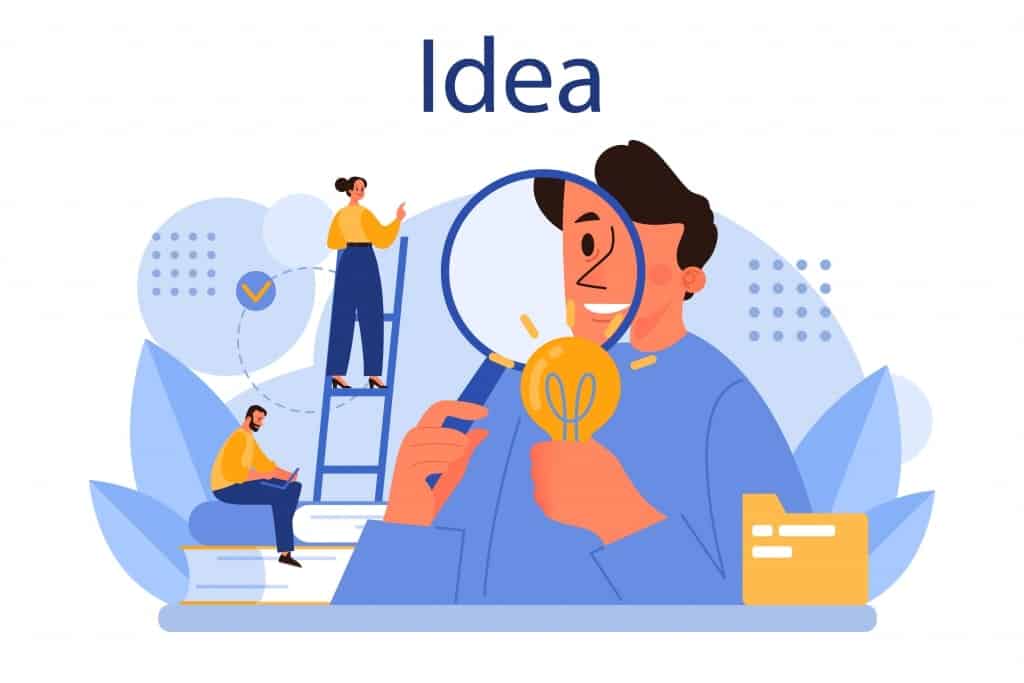
#9. Wie bleibt man kreativ?
Wenn Sie in kreativen Bereichen arbeiten, werden viele Interviewer diese Frage stellen, da eine „kreative Blockade“ bei Berufstätigen häufig vorkommt. Sie möchten daher wissen, welche Methoden Sie angewendet haben, um wieder in den Flow zu kommen.
Beispielantwort: Ich vertiefe mich in breite Themen, um neue Verbindungen zu knüpfen. Ich lese viel, beobachte verschiedene Branchen und beschäftige mich mit Kunst und Musik, um neue Perspektiven zu gewinnen. Außerdem brainstorme ich regelmäßig mit verschiedenen Gruppen, da andere Perspektiven meine Kreativität beflügeln. Und ich halte meine Ideen fest – auch die ausgefallensten –, denn man weiß nie, wohin Innovationen führen. Ein vielseitiger Ansatz hilft mir, Probleme auf neuartige und dennoch praktische Weise zu lösen.
Tipps zur Verbesserung Ihrer kreativen Fähigkeiten zur Problemlösung
Hier sind einige Tipps, die Ihre kreativen Fähigkeiten zur Problemlösung unterstützen:
- Praxis aktives Zuhören und Beobachtung: Achten Sie auf die Details um Sie herum und hören Sie aktiv zu, was andere sagen.
- Erweitern Sie Ihren Blickwinkel: Suchen Sie nach neuen Erfahrungen und Informationen, die Ihr Denken erweitern und Ihnen helfen können, Probleme aus neuen Blickwinkeln anzugehen.
- Teamwork: Die Zusammenarbeit mit anderen kann zu vielfältigen Perspektiven führen und Ihnen helfen, kreativere Lösungen zu finden.
- Bleib neugierig: Stellen Sie weiterhin Fragen, um eine neugierige und aufgeschlossene Haltung zu bewahren.
- Verwenden Sie Visualisierung und Mindmapping: Diese Tools können Ihnen dabei helfen, Probleme in einem neuen Licht zu sehen und besser organisiert über mögliche Lösungen nachzudenken.
- Achte auf die psychische Gesundheit: Pausen und entspannende Aktivitäten können Ihnen helfen, erfrischt zu bleiben und Burnout zu vermeiden.
- Scheitern umarmen: Scheuen Sie sich nicht, neue Wege auszuprobieren und mit verschiedenen Lösungen zu experimentieren, auch wenn diese nicht funktionieren.
Fazit
Hoffentlich hat Ihnen dieser Artikel hilfreiche Beispiele für kreative Problemlösungen geliefert und Sie gut darauf vorbereitet, bei den Personalverantwortlichen zu punkten. Um Ihre kreativen Problemlösungsfähigkeiten zu verbessern, ist es wichtig, eine wachstumsorientierte Denkweise zu entwickeln, Fehler zu akzeptieren, kreativ zu denken und mit anderen zusammenzuarbeiten.
Und vergessen Sie nicht, mit AhaSlides kreativ zu sein Öffentliche Vorlagenbibliothek!
Häufig gestellte Fragen
Was ist ein gutes Beispiel für die Problemlösung im Vorstellungsgespräch?
Achten Sie bei der Beantwortung der Fragen des Interviewers darauf, diesen Ansatz zu verwenden: das Problem klar definieren, relevante Daten sammeln, Ursachen analysieren, eine kreative Lösung vorschlagen, Auswirkungen verfolgen und die Ergebnisse quantifizieren.
Was ist ein kreativer Ansatz zur Problemlösung?
Urteilen Sie nicht. Verwerfen Sie beim Brainstorming keine Vorschläge sofort, egal wie seltsam sie erscheinen mögen. Verrückte Ideen können manchmal zu bahnbrechenden Lösungen führen.





